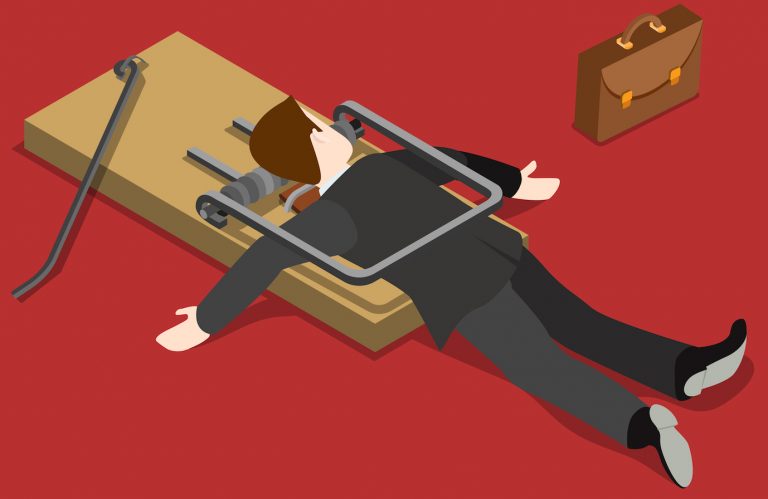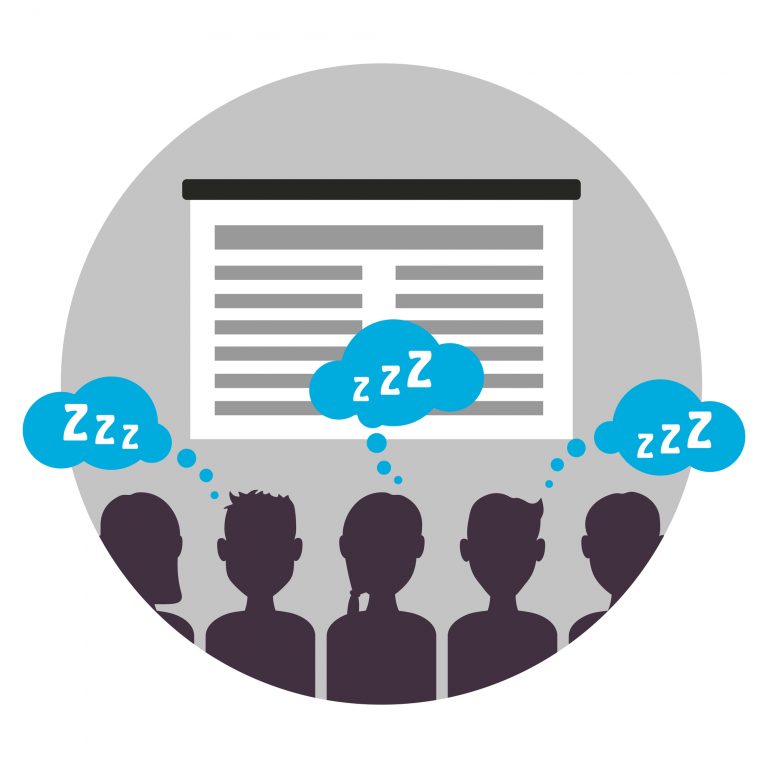4 traps awaiting in-house trainers – and how to avoid them
 So let’s get the shameless plug out of the way first: I’m often asked to train and support trainers who run in-house training sessions. Phew, that’s better. Now, having been doing this for several years there are 4 traps I frequently see in-house trainers fall into. Here they are, with my advice on what to do about them.
So let’s get the shameless plug out of the way first: I’m often asked to train and support trainers who run in-house training sessions. Phew, that’s better. Now, having been doing this for several years there are 4 traps I frequently see in-house trainers fall into. Here they are, with my advice on what to do about them.
Trap #1: doing a presentation
In-house trainers are often a mix of subject matter experts, people who are great presenters and people who care about the development of others (and their organisation). Not always all three qualities in one person, but often. So they get asked to ‘do a talk’, and afterwards someone asks them how it went. There’s a pause…”OK…I think”. That’s usually a sign that what they did was a good presentation, as opposed to a training session. So people sat there, watched and listened (if the trainer was lucky), and then it was over, possibly with polite applause. Was anything learned? Will that learning be applied? We may never know.

Try this: stop referring to your ‘audience’ and switch to ‘participants’. That’s right: you need them to participate. This will focus the mind somewhat.
Trap #2: hosing people with a slide show
I was once asked to comment on a ‘training session’ that comprised 45 slides – for a one-hour session. Discretion prevents full disclosure here but suffice to say there was a tussle over not how many slides, but whether they were even the right medium. Hosing people with slides and hoping that some of them will stick isn’t training (it’s not great presenting either). It’s just boring.
Try this: step away from that screen. It is not your starting point. Think about the best training sessions you’ve participated in and I’m willing to bet the acreage of slides was minimal. A few slides may be necessary but there are usually better media for the purpose.
Trap #3: doing all the talking

Well yes, you are the expert, so surely these people are in the room to hear what you have to say? Yes, indeed they are – but for an hour solid? Just droning on is more likely to alienate your participants than allow them to learn.
Try this: allow heaps of time for Q&A. Then you’ll be answering the actual questions your participants need answers to. Even better, allow participants to talk to each other about the issue and then report back. When your participants are talking, their brains are engaged, so don’t hog the mic.
Trap #4: no (or wrong) objectives
You set objectives when you’re doing a presentation (don’t you?). You‘ll need objectives for your training session. Too often the training objectives are weak or wrong. My pet hates are ‘they will know xyz…’ or ‘they will understand 123…’ Really? Will they? And how will you know they know? How will you prove they understand? Some in-house trainers crack the objective-setting code but then have way too many of them.
Try this: be realistic about what can be achieved with the number of people and time available. Write objectives that specify not what you’re going to do to your participants, but what they will be able to do afterwards as a result of your training session. Get really clear on the behaviour needed. Then focus on how you’ll help that happen.
Want to develop your training and facilitation skills? Get in touch to discuss how I can help in-house trainers.
Dawn is the author of ‘The Feedback Book’ and ‘How to be Zoomly at work’
Copyright Zoomly
